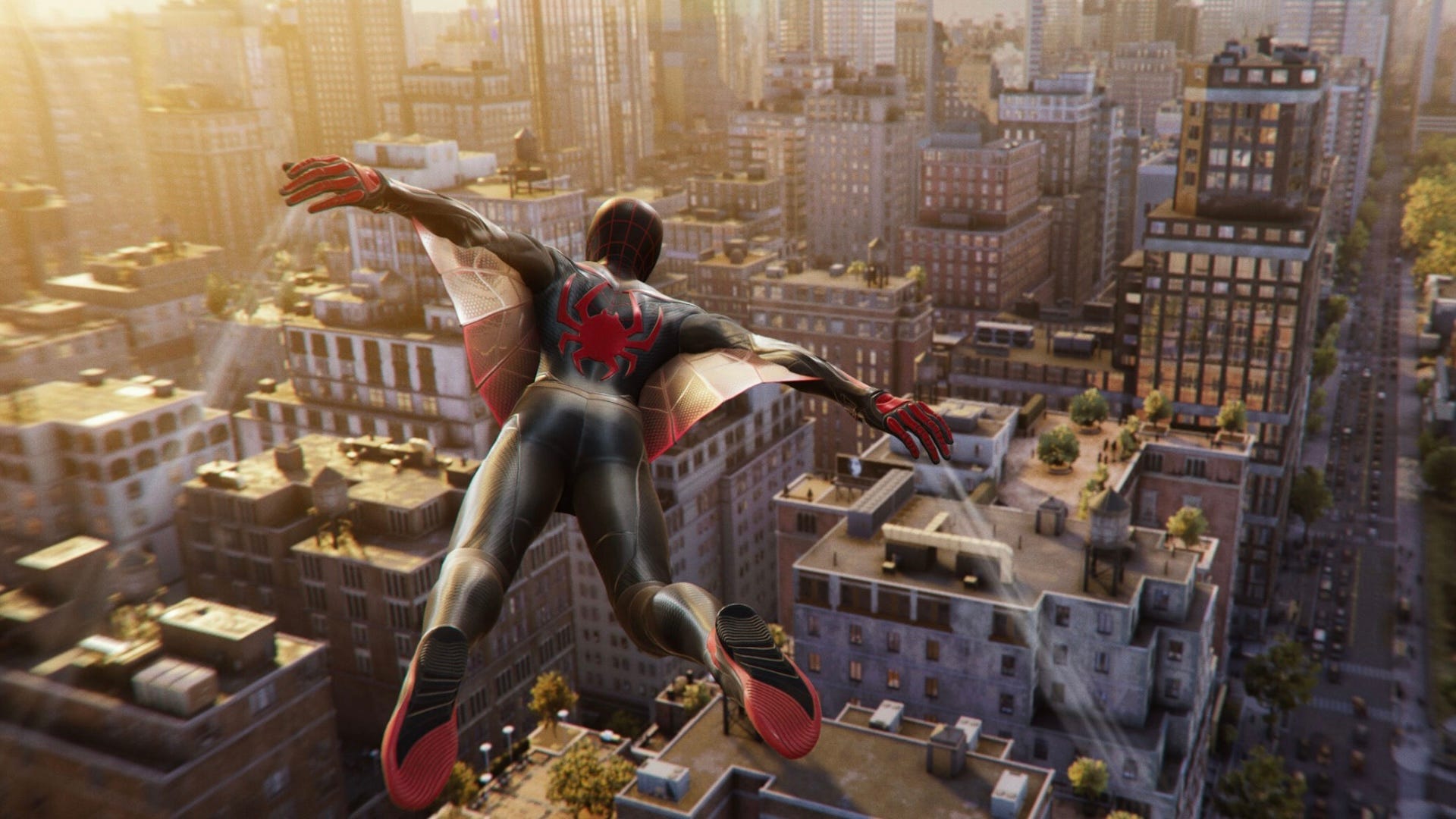
Spider-Man games are skateboarding games, at least in spirit. As you make your way through the concrete jungle of New York, moving from mission to mission, you’re forced to recontextualize the mundane. A flagpole becomes a shining launch point, a skyscraper flips onto its side to become a flat surface used to reach up higher and higher. In many ways, skateboarding also encourages this new way of seeing the world around you. Out of the drab and often grey environments of modern cities suddenly spring playgrounds— ultimate assault courses, made up of railings, flatland and make-shift ramps. The thread that runs from Spider-Man to skateboarding is as evident as ever in Marvel’s Spider-Man 2, and with the addition of the Web-Wings, there’s even a direct analogue to the most game-changing mechanic added to a skating game: the revert from Tony Hawk’s Pro Skater 3.
While in real life, the revert is a fairly inconsequential trick used to go from backward-facing movement to forward-facing, its introduction into Tony Hawk’s Pro Skater 3 marked a huge leap forward in the ways in which players could traverse the game’s many courses. For the first time, it was possible to link vertical tricks seamlessly into horizontal movement. You could launch from a quarter pipe, using the air you’ve gained to pull off several tricks, and then right as you made contact with the ground again, use a revert into a manual, continuing your combo forward into a new plane of motion. Suddenly new possibilities for combos opened up, in a way that made Tony Hawk’s Pro Skater 2 (considered by many to be a 10/10) feel lesser as a result. The change was so impactful in fact, that it was baked into 2020’s Tony Hawk’s Pro Skater 1 +2, adding what is now thought of as an essential skateboarding game feature to the best collection of maps in the series.
Marvel’s Spider-Man 2 adds the Web-Wings to the ever-growing repertoires of Miles Morales and Peter Parker, and the change is similarly revolutionary. While the traversal shown off in the previous Insomniac Spider-Man games seemed perfect at the time (and of course, they certainly felt it), using the Web-Wings in the sequel instantly makes them both feel like a first draft. Huge stretches of skyline are now open and inviting, and thanks to the new wind tunnels and updrafts, you could easily go from one end of the map to the other without breaking a sweat, and more importantly look good doing it. Your approach to web-swinging is challenged the first time you pop the new Web-Wings, as you realise at once its limitations as well as the ways in which the game now wants to use it. Swinging now serves as the main way to game vertical height, and is importantly confined to the dimensions of the skyline. The Web-Wings, not so much, as they rely on the air and motion in order to carry you forward.




